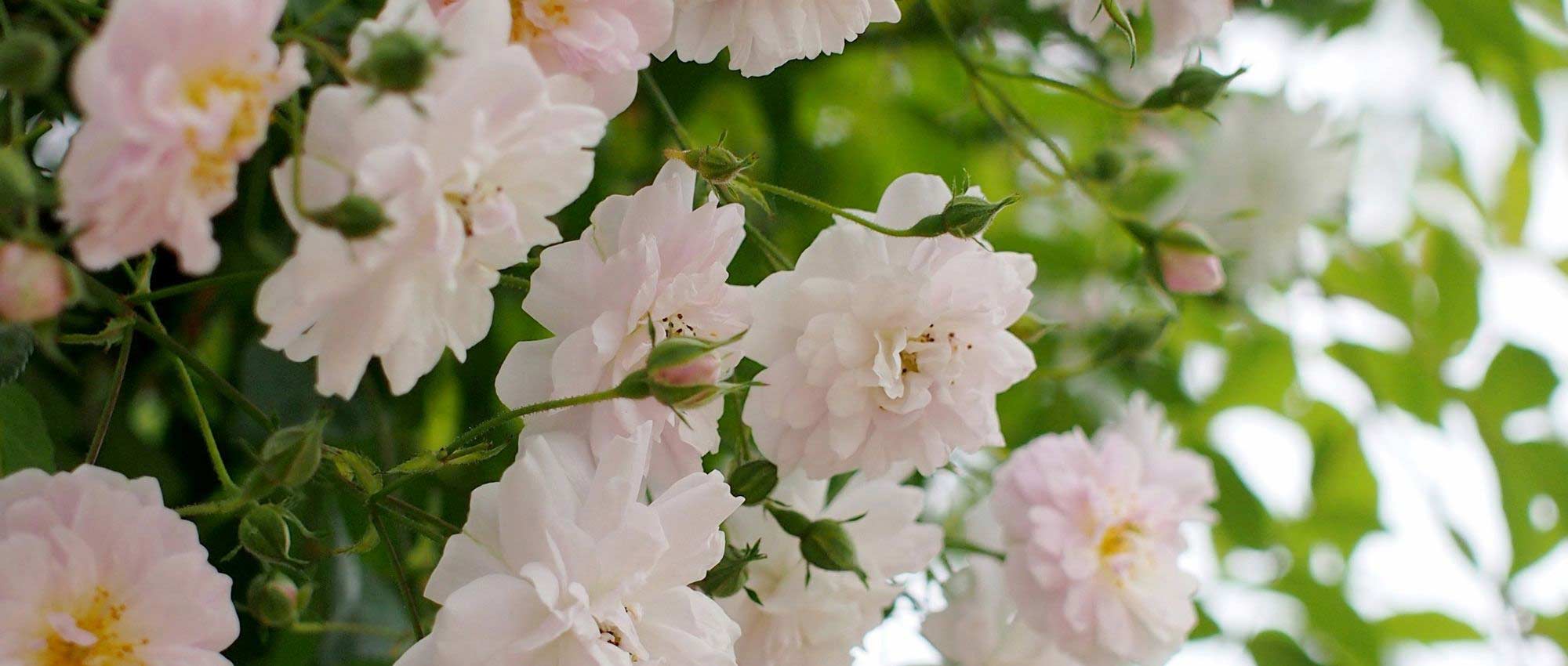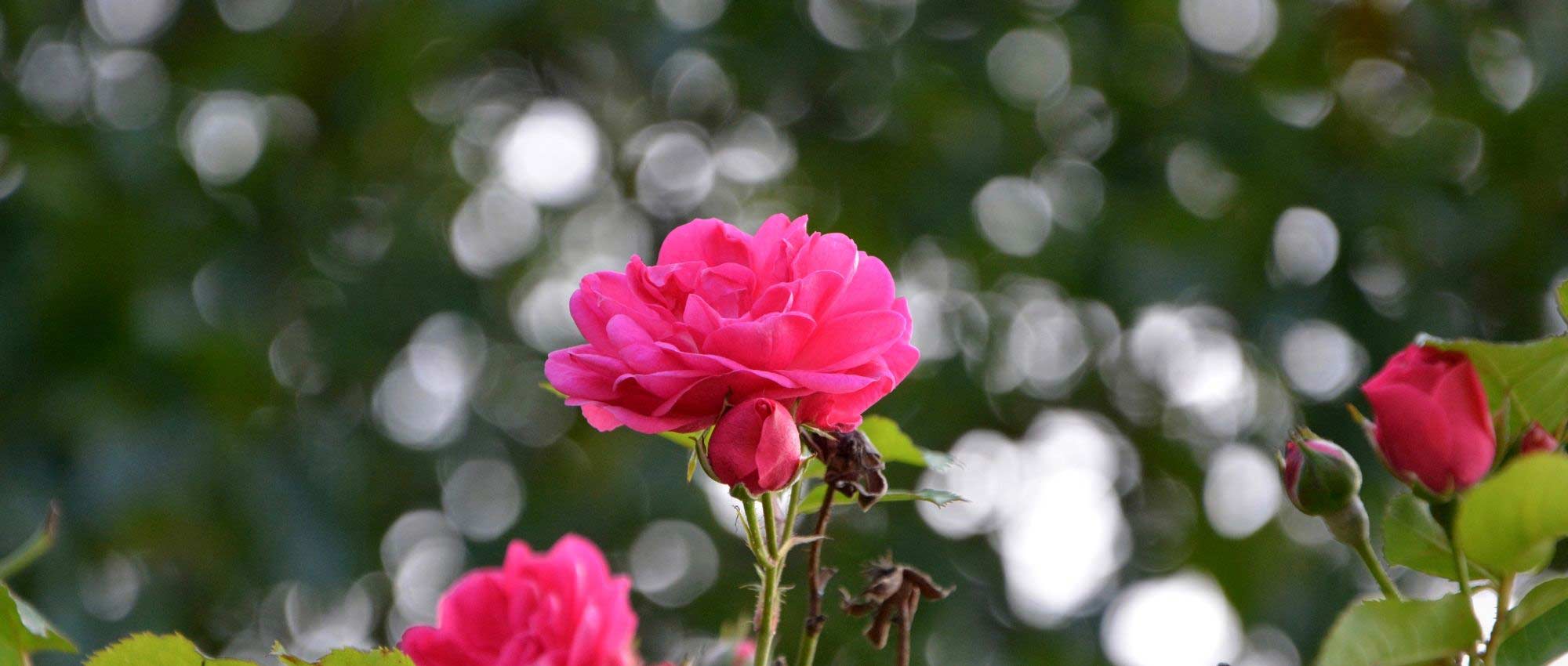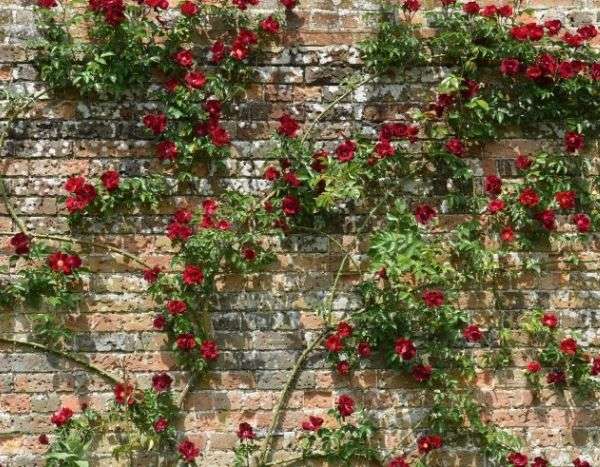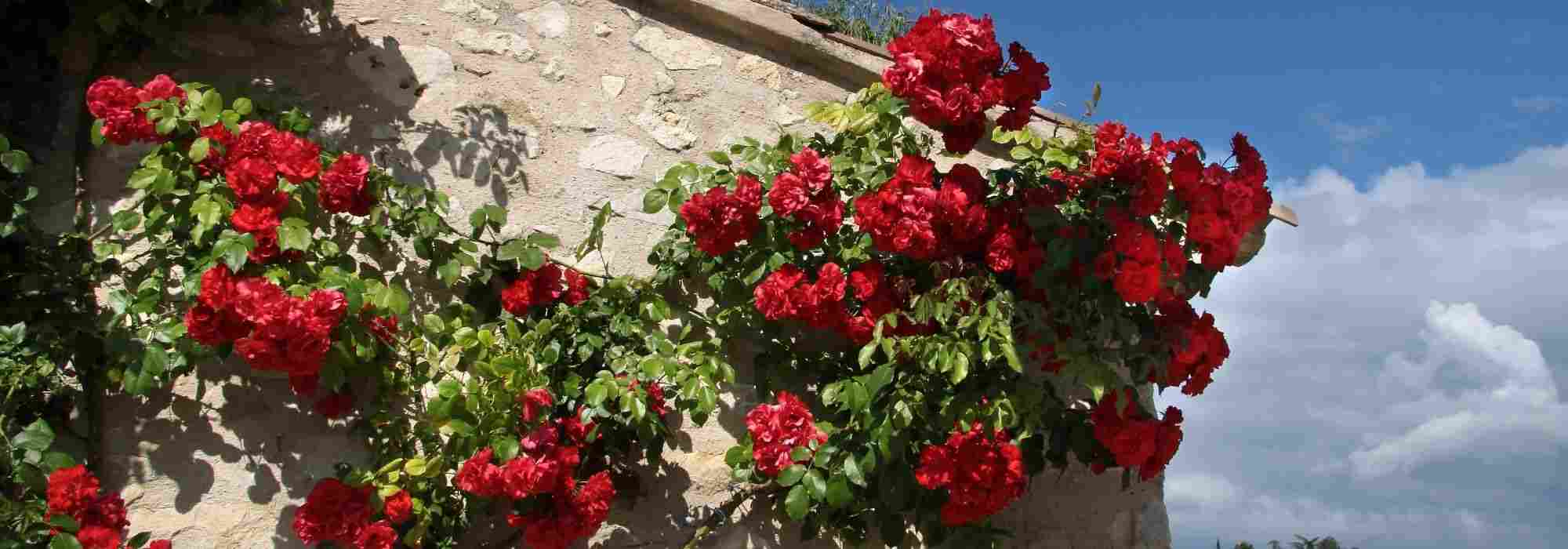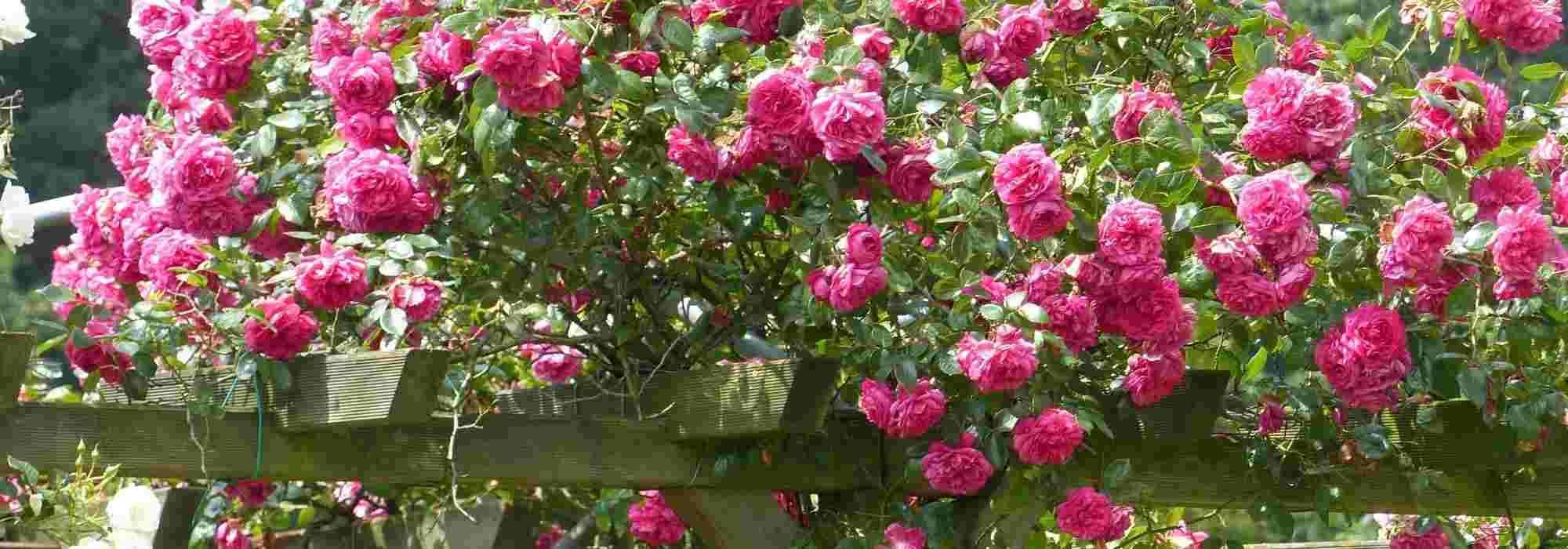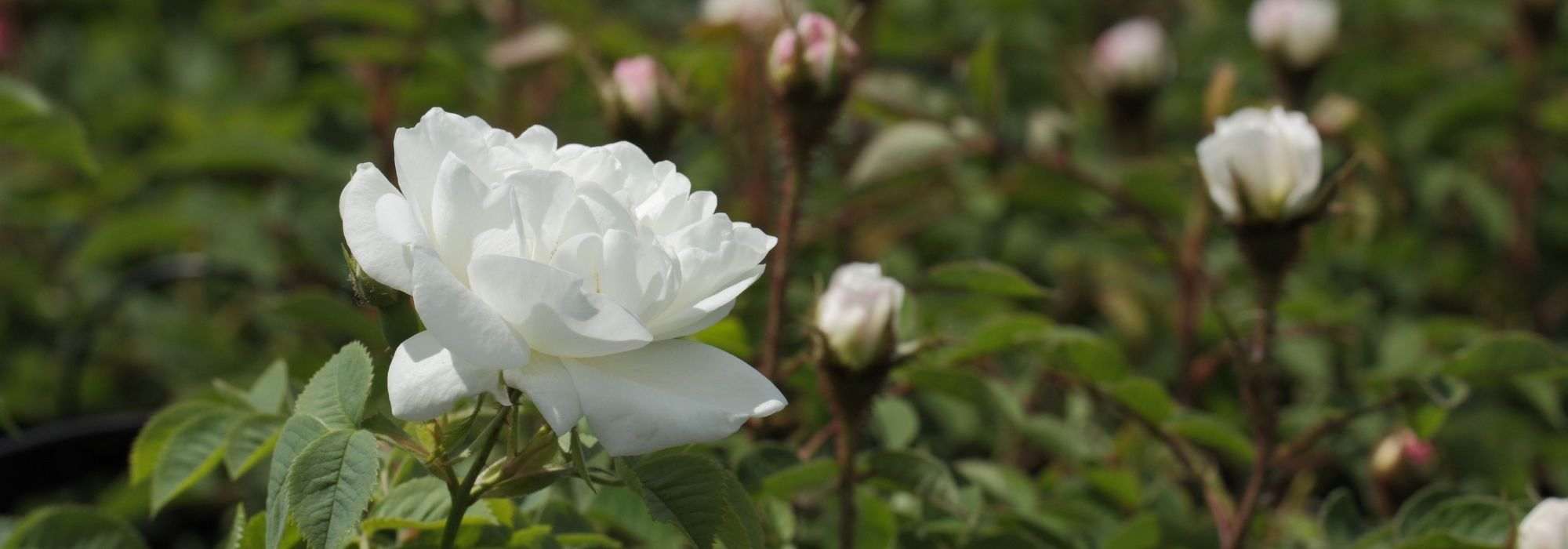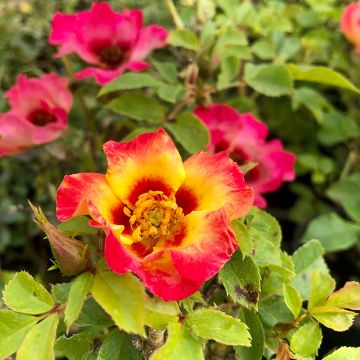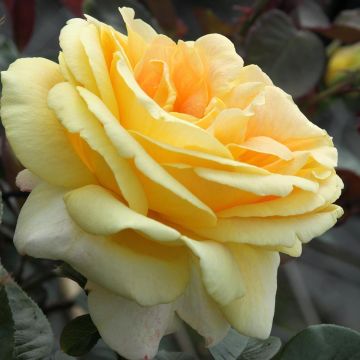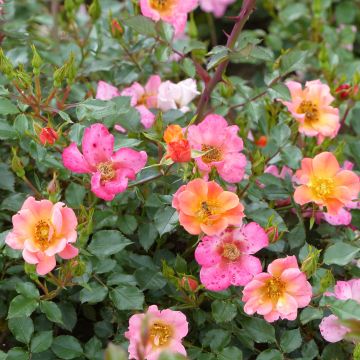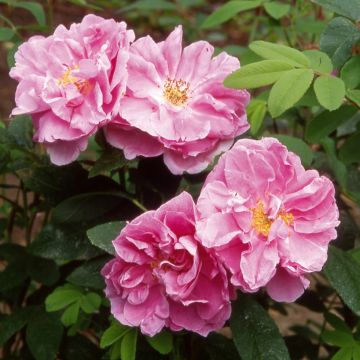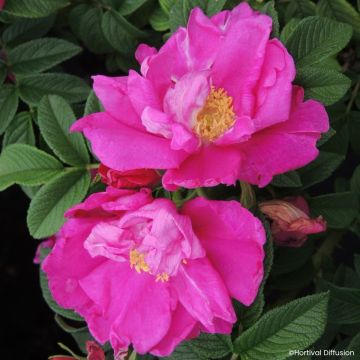

Rosa Negresco - Climbing Rose
Rosa Negresco - Climbing Rose
Rosa 'Meigrappo' NEGRESCO®
Climbing Rose
Special offer!
Receive a €20 voucher for any order over €90 (excluding delivery costs, credit notes, and plastic-free options)!
1- Add your favorite plants to your cart.
2- Once you have reached €90, confirm your order (you can even choose the delivery date!).
3- As soon as your order is shipped, you will receive an email containing your voucher code, valid for 3 months (90 days).
Your voucher is unique and can only be used once, for any order with a minimum value of €20, excluding delivery costs.
Can be combined with other current offers, non-divisible and non-refundable.
We guarantee the quality of our plants for a full growing cycle, and will replace at our expense any plant that fails to recover under normal climatic and planting conditions.

Description
The 'Meigrappo' Climbing Rose Negresco is a stunning French variety, its name being evocative of the French Riviera and its famous palace. Continuously flowering abundantly from spring to autumn, it produces large, double, cup-shaped roses whose fiery red hue never fails to catch the eye in the garden. With its glossy dark green foliage creating the perfect backdrop for the scarlet flowering, this rose will quickly cover a trellis, climbing up to 2.50 m in height. Easy to grow in full sun in most not-too-dry soil types, it is undoubtedly one of the most beautiful climbers.
The term 'Rose', Rosa in Latin, belongs to the Rosaceae family, which owes its name to it. With around 5,000 recorded species, it is one of the richest botanical families, especially in temperate climates. The Rosa genus comprises approximately 150 botanical species, with a shrubby or climbing habit, exhibiting great variability in size (Rosa gigantea is a climber that can exceed 20 m in height...), foliage (shape and colour), thorns, sometimes ornamental and occasionally absent as in the 'Zéphirine Drouin' Climbing Rose , and even fruits, occasionally highly ornamental in some wild species. This botanical richness has been exploited and refined for centuries by growers who strive to create ever more beautiful new varieties to enchant us. It is estimated that the number of cultivars now approaches 40,000!
Produced by Meilland, one of France's top rose specialists, This variety was introduced to the market in 2009 and had, even before its launch, been awarded the gold medal for best climber at the new roses competition in Rome. It is a rose with both vigorous and balanced growth, reaching about 2.50 m in height and 2 m in spread. It bears beautiful dark green foliage with a glossy surface offering exceptional disease-resistance. This dark foliage perfectly highlights the dazzling flowering. In May-June, the plant produces numerous roses of approximately 11 cm in diameter with a turbinate corolla formed of 35 to 40 petals of a resplendent vermilion red. Often single, the flowers are sometimes grouped in clusters of two to five, further enhancing the visual impact of the plant. Continuously flowering abundantly, this rose produces successive waves of flowers throughout summer and until the first frosts. The display is impressive, with this very successful colour contrast and flowers blooming from the base to the top of the bush. Although not fragrant, this magnificent climbing rose captivates with the exuberance of its flowering and enables stunning cut flower display to be created to decorate your home. Add a few stems of Baby's Breath to the vase for a magnificent combination you will never tire of admiring.
Its moderate growth enables the Negresco Climbing Rose to be planted even in the most intimate gardens. Train it up a pergola or trellis, and it will illuminate your scene throughout the growing season. Plant a Clematis 'Miss Bateman' alongside it, whose elegant star-shaped white flowers will bloom earlier in spring, and whose repeat flowering in September will create a sublime pairing with the bright red of your 'Negresco' rose. If you enjoy strong contrasts, you could also pair it with a Clematis tangutica, a botanical species whose star-shaped yellow flowers bloom all summer. And if you live in a region with mild winters, you could create an interesting display by opting for a Clematis armandii 'Little White Charm', whose evergreen foliage will prevent your trellis from becoming bare in winter and will bring a delightful fragrance in spring with its numerous small star-shaped white flowers in March-April.
Plant habit
Flowering
Foliage
Botanical data
Rosa
'Meigrappo' NEGRESCO®
Rosaceae
Climbing Rose
Rosa NEGRESCO, Rosa CRIMSON SKY
Cultivar or hybrid
Planting and care
Plant your Climbing Negresco Rose in a fairly sunny position. Roses are tolerant but dislike excessive lime and thrive better in fertile, well-drained soil. They will adapt to any garden provided that the ground is well worked and sufficiently rich. To plant your rose, prepare the soil by breaking it up finely and placing an organic fertiliser such as dried blood or dehydrated horn at the bottom of the planting hole. Water generously after planting to remove any air pockets. Provide regular water for a few weeks to encourage rooting. At the end of winter, shorten the side branches that have flowered down to three buds. Take advantage of this pruning to remove any dead wood and unsightly branches. Prune at an angle above a bud to enable rainwater to drain away quickly. Deadhead as flowering progresses to stimulate the development of other buds.
If you plant your climbing rose next to a living tree, the rose's root system will compete with that of the already well-established tree. To avoid this, here's a trick: plant the rose in a large container with the bottom removed, at the foot of the tree. The tree's roots will not penetrate the container for at least a year. Remove the container in the second year, for example by cutting one side, without disturbing the rose's root system. The rose will have had time to develop its root system deeply and will be more resilient.
This rose is quite disease-resistant, but if it still shows some spots by late summer, it is not a problem for its development. These spots are not harmful to the rose; it is a natural phenomenon. Follow all our advice to remedy this and read our article: Help: I have spots on my roses
Planting period
Intended location
Care
Planting & care advice
This item has not been reviewed yet - be the first to leave a review about it.
Similar products
Haven't found what you were looking for?
Hardiness is the lowest winter temperature a plant can endure without suffering serious damage or even dying. However, hardiness is affected by location (a sheltered area, such as a patio), protection (winter cover) and soil type (hardiness is improved by well-drained soil).

Photo Sharing Terms & Conditions
In order to encourage gardeners to interact and share their experiences, Promesse de fleurs offers various media enabling content to be uploaded onto its Site - in particular via the ‘Photo sharing’ module.
The User agrees to refrain from:
- Posting any content that is illegal, prejudicial, insulting, racist, inciteful to hatred, revisionist, contrary to public decency, that infringes on privacy or on the privacy rights of third parties, in particular the publicity rights of persons and goods, intellectual property rights, or the right to privacy.
- Submitting content on behalf of a third party;
- Impersonate the identity of a third party and/or publish any personal information about a third party;
In general, the User undertakes to refrain from any unethical behaviour.
All Content (in particular text, comments, files, images, photos, videos, creative works, etc.), which may be subject to property or intellectual property rights, image or other private rights, shall remain the property of the User, subject to the limited rights granted by the terms of the licence granted by Promesse de fleurs as stated below. Users are at liberty to publish or not to publish such Content on the Site, notably via the ‘Photo Sharing’ facility, and accept that this Content shall be made public and freely accessible, notably on the Internet.
Users further acknowledge, undertake to have ,and guarantee that they hold all necessary rights and permissions to publish such material on the Site, in particular with regard to the legislation in force pertaining to any privacy, property, intellectual property, image, or contractual rights, or rights of any other nature. By publishing such Content on the Site, Users acknowledge accepting full liability as publishers of the Content within the meaning of the law, and grant Promesse de fleurs, free of charge, an inclusive, worldwide licence for the said Content for the entire duration of its publication, including all reproduction, representation, up/downloading, displaying, performing, transmission, and storage rights.
Users also grant permission for their name to be linked to the Content and accept that this link may not always be made available.
By engaging in posting material, Users consent to their Content becoming automatically accessible on the Internet, in particular on other sites and/or blogs and/or web pages of the Promesse de fleurs site, including in particular social pages and the Promesse de fleurs catalogue.
Users may secure the removal of entrusted content free of charge by issuing a simple request via our contact form.
The flowering period indicated on our website applies to countries and regions located in USDA zone 8 (France, the United Kingdom, Ireland, the Netherlands, etc.)
It will vary according to where you live:
- In zones 9 to 10 (Italy, Spain, Greece, etc.), flowering will occur about 2 to 4 weeks earlier.
- In zones 6 to 7 (Germany, Poland, Slovenia, and lower mountainous regions), flowering will be delayed by 2 to 3 weeks.
- In zone 5 (Central Europe, Scandinavia), blooming will be delayed by 3 to 5 weeks.
In temperate climates, pruning of spring-flowering shrubs (forsythia, spireas, etc.) should be done just after flowering.
Pruning of summer-flowering shrubs (Indian Lilac, Perovskia, etc.) can be done in winter or spring.
In cold regions as well as with frost-sensitive plants, avoid pruning too early when severe frosts may still occur.
The planting period indicated on our website applies to countries and regions located in USDA zone 8 (France, United Kingdom, Ireland, Netherlands).
It will vary according to where you live:
- In Mediterranean zones (Marseille, Madrid, Milan, etc.), autumn and winter are the best planting periods.
- In continental zones (Strasbourg, Munich, Vienna, etc.), delay planting by 2 to 3 weeks in spring and bring it forward by 2 to 4 weeks in autumn.
- In mountainous regions (the Alps, Pyrenees, Carpathians, etc.), it is best to plant in late spring (May-June) or late summer (August-September).
The harvesting period indicated on our website applies to countries and regions in USDA zone 8 (France, England, Ireland, the Netherlands).
In colder areas (Scandinavia, Poland, Austria...) fruit and vegetable harvests are likely to be delayed by 3-4 weeks.
In warmer areas (Italy, Spain, Greece, etc.), harvesting will probably take place earlier, depending on weather conditions.
The sowing periods indicated on our website apply to countries and regions within USDA Zone 8 (France, UK, Ireland, Netherlands).
In colder areas (Scandinavia, Poland, Austria...), delay any outdoor sowing by 3-4 weeks, or sow under glass.
In warmer climes (Italy, Spain, Greece, etc.), bring outdoor sowing forward by a few weeks.


































